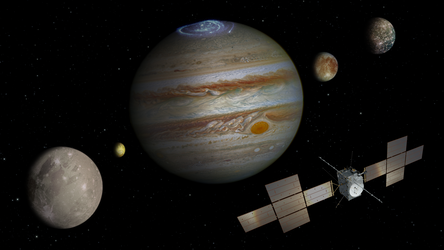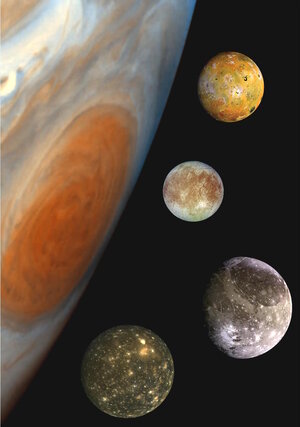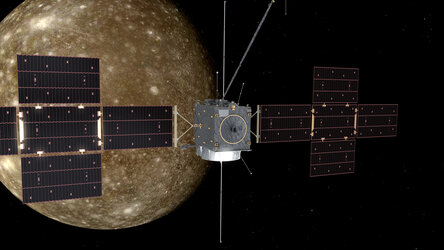Accept all cookies Accept only essential cookies See our Cookie Notice

About ESA
The European Space Agency (ESA) is Europe’s gateway to space. Its mission is to shape the development of Europe’s space capability and ensure that investment in space continues to deliver benefits to the citizens of Europe and the world.
Highlights
ESA - United space in Europe
This is ESA ESA facts Member States & Cooperating States Funding Director General Top management For Member State Delegations European vision European Space Policy ESA & EU Space Councils Responsibility & Sustainability Annual Report Calendar of meetings Corporate newsEstablishments & sites
ESA Headquarters ESA ESTEC ESA ESOC ESA ESRIN ESA EAC ESA ESAC Europe's Spaceport ESA ESEC ESA ECSAT Brussels Office Washington OfficeWorking with ESA
Business with ESA ESA Commercialisation Gateway Law at ESA Careers Cyber resilience at ESA IT at ESA Newsroom Partnerships Merchandising Licence Education Open Space Innovation Platform Integrity and Reporting Administrative Tribunal Health and SafetyMore about ESA
History ESA Historical Archives Exhibitions Publications Art & Culture ESA Merchandise Kids Diversity ESA Brand Centre ESA ChampionsSpace in Member States
Find out more about space activities in our 23 Member States, and understand how ESA works together with their national agencies, institutions and organisations.
Science & Exploration
Exploring our Solar System and unlocking the secrets of the Universe
Go to topicAstronauts
Missions
Juice Euclid Webb Solar Orbiter BepiColombo Gaia ExoMars Cheops Exoplanet missions More missionsActivities
International Space Station Orion service module Gateway Concordia Caves & Pangaea BenefitsLatest
Space Safety
Protecting life and infrastructure on Earth and in orbit
Go to topicAsteroids
Asteroids and Planetary Defence Asteroid danger explained Flyeye telescope: asteroid detection Hera mission: asteroid deflection Near-Earth Object Coordination CentreSpace junk
About space debris Space debris by the numbers Space Environment Report In space refuelling, refurbishing and removingSafety from space
Clean Space ecodesign Zero Debris Technologies Space for Earth Supporting Sustainable DevelopmentApplications
Using space to benefit citizens and meet future challenges on Earth
Go to topicObserving the Earth
Observing the Earth Future EO Copernicus Meteorology Space for our climate Satellite missionsCommercialisation
ESA Commercialisation Gateway Open Space Innovation Platform Business Incubation ESA Space SolutionsLatest
Enabling & Support
Making space accessible and developing the technologies for the future
Go to topicBuilding missions
Space Engineering and Technology Test centre Laboratories Concurrent Design Facility Preparing for the future Shaping the Future Discovery and Preparation Advanced Concepts TeamSpace transportation
Space Transportation Ariane Vega Space Rider Future space transportation Boost! Europe's Spaceport Launches from Europe's Spaceport from 2012Latest

Jupiter’s cratered moon, Callisto
Thank you for liking
You have already liked this page, you can only like it once!
The speckled object depicted here is Callisto, Jupiter’s second largest moon. This image was taken in May 2001 by NASA’s Galileo spacecraft, which studied Jupiter and its moons from 1995 until 2003.
Similar in appearance to a golf ball, Callisto is covered almost uniformly with pockmarks and craters across its surface, evidence of relentless collisions. In fact, Callisto is the most heavily cratered object in the Solar System. The moon is made up of equal parts of rock and ice – the brighter parts of Callisto’s surface are thought to be mainly water ice, whereas the darker patches are regions of highly eroded and ice-poor rocky material.
Callisto is roughly the same size as the planet Mercury, but only about a third of the mass. It is the outermost of Jupiter’s four large Galilean satellites, a group consisting of Io, Europa, Ganymede and Callisto. It orbits relatively far away from Jupiter compared to these other satellites: it lies 1 880 000 km from the planet, roughly 26 times the radius of the planet itself. While this in itself is not unusual – our Moon orbits at some 60 times Earth’s radius – the important thing is Callisto’s isolation from its neighbouring moons. Callisto’s closest neighbour is Ganymede, which orbits 800 000 km closer to Jupiter.
This isolation means that Callisto does not experience any significant tidal forces from Jupiter that would tear at its structure. It also does not show any signs of geological processes such as volcanism or plate tectonics, which we clearly see on moons that are involved in violent cosmic tugs-of-war with Jupiter, such as Io, Europa and Ganymede. Callisto remains relatively intact and is a witness of the early Solar System: its surface is the oldest terrain, at a truly ancient four billion years.
This image is the only complete full-colour view of Callisto obtained by Galileo. The spacecraft provided us with a great deal of information about the jovian system: as well as sending the first probe into the atmosphere of Jupiter, and measuring Jupiter’s composition and dynamics, it observed Io’s volcanism, sent back data supporting the idea of a liquid ocean on Europa, and probed the properties of Ganymede and the subject of this image, Callisto. It also managed to observe the famous Comet Shoemaker–Levy 9 colliding with Jupiter in 1994.
The jovian system will be visited again in the not-too-distant future. In 2016, NASA’s Juno spacecraft will arrive at Jupiter and start to beam back images of the planet’s poles. Later, ESA’s Juice, short for JUpiter ICy moons Explorer, planned for launch in 2022, will tour the system with the aim of making a breakthrough in our knowledge of the giant gaseous planet and its environs, especially the intriguing moons Ganymede, Europa and Callisto.
-
CREDIT
NASA/JPL/DLR -
LICENCE
ESA Standard Licence

Exploring Jupiter

Jupiter's largest moons

Juice flyby of Callisto (artist’s impression)

Juice flyby of Callisto (artist’s impression)















 Germany
Germany
 Austria
Austria
 Belgium
Belgium
 Denmark
Denmark
 Spain
Spain
 Estonia
Estonia
 Finland
Finland
 France
France
 Greece
Greece
 Hungary
Hungary
 Ireland
Ireland
 Italy
Italy
 Luxembourg
Luxembourg
 Norway
Norway
 The Netherlands
The Netherlands
 Poland
Poland
 Portugal
Portugal
 Czechia
Czechia
 Romania
Romania
 United Kingdom
United Kingdom
 Slovenia
Slovenia
 Sweden
Sweden
 Switzerland
Switzerland
























